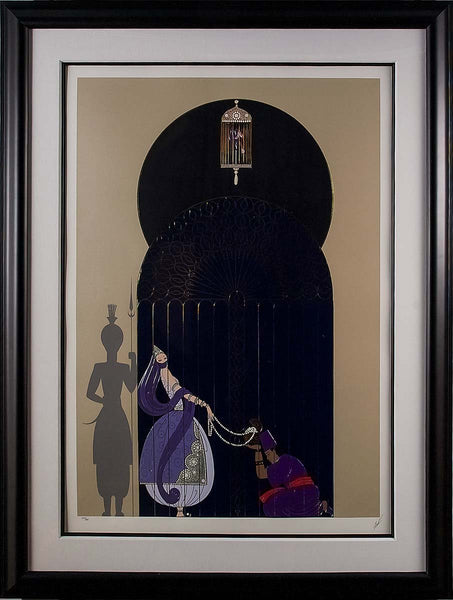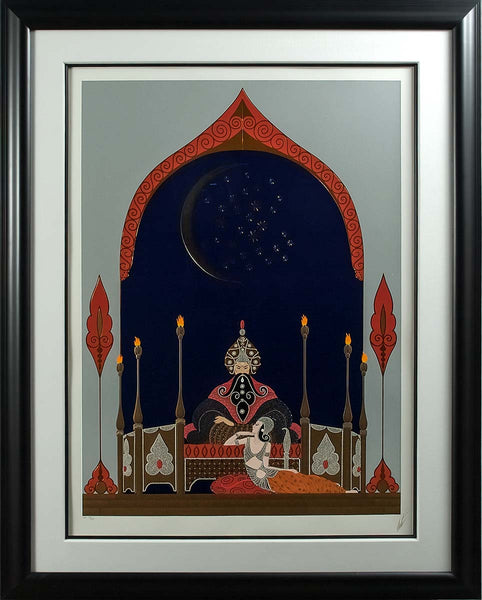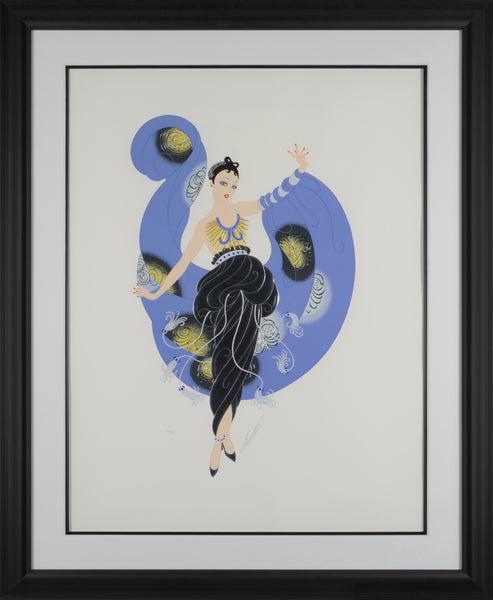About the Work
"Chinchilla" was created originally as a fashion illustration for Harper's Bazaar in 1924. The chinchilla fur coat was very popular with nobles and quite costly. Chinchillas were brought to North America in the 1920s to be bred in captivity and flourished in the fur trade. A more inexpensive way to incorporate chinchilla fur into an outfit was to trim the outfit with the fur, as is seen in Erté's bronze sculpture.
"Chinchilla" is a Sculpture sized at 8 x 9 1/4 x 21 1/2 - inches and cast in bronze using the lost wax process.
About the Artist
Erté was born Romain de Tirtoff in St. Petersburg, Russia on November 23rd, 1892 and was raised amidst Russia's social elite. At the age of five he created an evening gown for his mother and managed to persuade the adults to craft it, they were astounded by the results. In 1912, Romain left St. Petersburg for Paris at the age of nineteen with the aim of becoming an artist. After working with Paul " Le Magnifique" Poiret on several theatrical productions Romain, still under the pseudonym of Erte, began to work more independently. He hand-crafted original costume and fashion designs for many of the era’s most renowned actresses, including Joan Crawford, Lillian Gish, Marion Davies, Anna Pavlova, Norma Shearer, and others. His masterpieces for the stage included extravagant production designs at venues such as New York’s Radio City Music Hall, the Casino de Paris, and the Paris Opera. In 1915 he began his long professional relationship with Harper's Bazaar and created 240 covers for the esteemed magazine. For 6 months in 1916, Erté simultaneously worked with Vogue as well. As a result of his highly publicized success, Erté would later be called the father of the ‘Art Deco’ movement.






